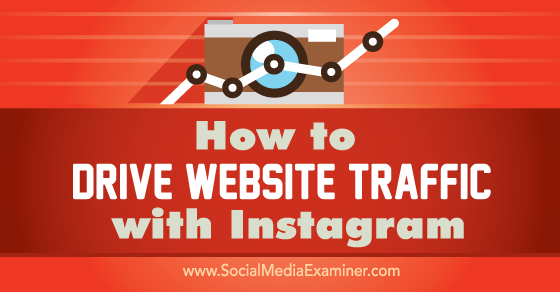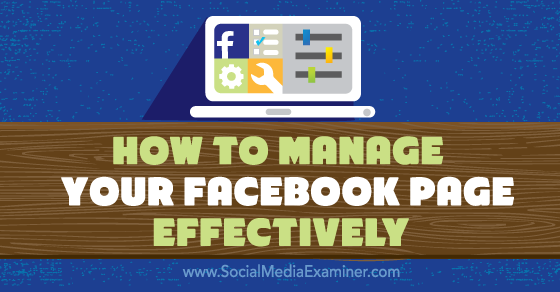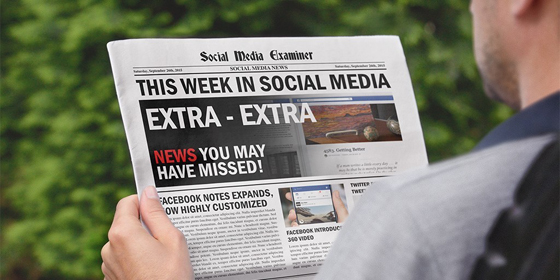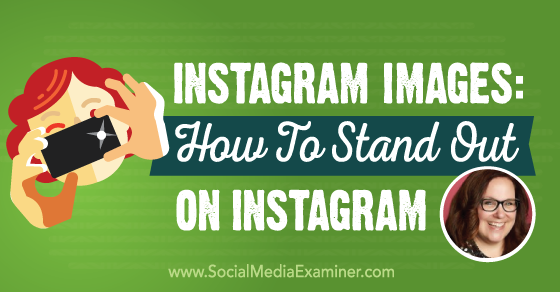
Podcasts are hot.
It seems everyone is either thinking of launching a podcast, producing one or being interviewed. Podcasts are a very engaging way to communicate with your audience. They can be listened to while sitting on the beach, driving the car and working out at the gym.
The sound of the voice reveals a lot about a person. You can feel their passion and the meaning that intonation and pitch and volume reveals.
I recently launched a podcast called “The Top” which is like an audio version of a monthly income report and had the fastest growth any business podcast has ever had in its first month. We learned a lot along the way and in this in-depth 4,000 word post we will reveal the specific strategies and tactics that worked.
So what were the exact results?
Here’s the results
Before we tell you the stats why don’t you check the podcast out. (click here to listen on iTunes or click here to listen on Android)
This post will be one of the most useful pieces of content you can study if you’re curious about podcast launches in 2015 and beyond. (There are also some other useful links at end that I found to be great for researching on the art of podcasting)
Here are the results.
1. Hit #1 on day one
It was 100% engineered and predictable.
Most other “podcast launch” blog post strategies are from 2014, 2013 or even later than that.
Totally USELESS.

2. 1,050 downloads on day one
Here are the RESULTS we drove in the first 30 days of the show being live:

3. #1 in “Business New and Noteworthy”
Don’t understand how Apple picks who to feature and who to sink? Keep reading and I’ll show you how to virtually guarantee you get into New and Noteworthy.

4. 36,000 downloads in first 30 days

What they said
The reviews were positive right out of the gate. This is what the @thecelluarguy had to say in one of the reviews.
 So what were the steps behind this successful launch.
So what were the steps behind this successful launch.
Step 1: Launch with at least 8 episodes
I like doing things I know I can WIN. Podcasting is one of those things. It is ABSOLUTELY possible to literally ENGINEER a successful podcast if you follow these tips:
Everyone told me to launch with 3-5 episodes but no one gave me good reasoning.
“Launching with 3 episodes is WRONG STRATEGY“
The way I saw it, there was incredible UPSIDE to launching with the maximum numbers of episodes I could without making my audience feel like they couldn’t catch up.
The math is SIMPLE:
- 1 Subscriber x 1 episode = 1 download
- 1 SUBSCRIBER x 8 EPISODES = 8 DOWNLOADS
Downloads play a role in rankings and a high ranking gets you more FREE listeners from iTunes. Anyone wanna be 8x more effective? Get ranked 8 times higher? Get 8 times as many downloads?
Launch with as many episodes as you can but no more than 2 hours of total content. (If your show is 1 hour long, launch with 2 episodes).
The KEY is to MAKE sure you don’t overwhelm your audience on day 1.

I decided to launch with 8 x 15 minute episodes.
This means there would be 2 hours of content: Not too much to make new listeners feel overwhelmed BUT still getting 8 “launch partners” who EMAILED THEIR LISTS on day one.
Here’s how I got them to email. I sent an email to all 20 pre-recorded episode guests and said:
“Hey, I’m trying to decide which 8 episodes to launch with. These episodes will go out to my list and I’ll be investing heavily in promoting them. If I put you on launch day, are you willing to help out and email your list?”
Needless to say, everyone who said “yes” went out on day one. Everyone who said “no” was put in the queue for later.
BONUS: I used the fact that Apple ranked us #1 on launch day to convince initial “no”s into “yes’s” for emailing their lists!)
The result was that straight away on Day 1, we were AVERAGING 1000 downloads per day. Here is a screenshot from Libsyn, the tool I used to host my podcast:

Launch with as many episodes as you can but don’t exceed 2 hours of content.
What are 12 free shortcuts to getting 5,000 downloads FAST?
1. Add a PS into every personal email with a link to the episode.
Here is a screen shot showing an email signature with a link to an episode (I use gmail):

2. Email your guests the day their episode releases and soft-sell them to sharing on social media.
This helps in convincing guests yo post on social.

3. Encourage competition between your guests
Publish a “Top 10 Most Influential Entrepreneurs From August” list each month and encourage competition among podcast guests to get in that list.
I did this with Sue Zimmerman and she crushed it driving an additional 893 downloads to her episode in 24 hours (GO Sue!).
THIS DROVE OUR DAILY SPIKE OF 2500 DOWNLOADS

4. Get one big guest who you truly admire and use them as an anchor to attract other big names
(Bob, I appreciate you sharing how you charge $20k per keynote and sold 1.5m books you best-seller, you!  .
.
This is how I COLD pitched A BIG NAME GUEST – Joe Pulizzi (CEO at Content Marketing World).
Joe said yes – his interview is #54 (release date 9/17/2015):

5. Every episode should start with a pre-interview open loop
This means you should say 1-2 sentences to drive intense curiosity about the last episode that went live. For example:
“In yesterday’s episode #1, you heard how Kim Garst built a $23k/mo membership site using a $47/mo product!”.
This turns one download into 2 almost automatically.
6. Post an Instagram picture for each episode
Also include the top trending hashtag that day (found on Instagram homepage dashboard), along with 5-10 hashtags relevant to that episode.
I also like TAGGING 5 people who I think would get value from listening to the episode. Make sure you LINK to your podcast in your Instagram Biography.
Here’s an example I did with a woman who is doing $171k/mo and CRUSHING most men (Go Crystal!):
7. Encourage guest sharing
When a tool or guest gets mentioned in your podcast, tell them via twitter/facebook – they will re-share. I strategically spend 120 seconds on every episode asking 5 questions called the “Famous Five”.
Each of these questions get the guest to mention their “favorite” something (that ties with a new potential podcast partner/DISTRIBUTION channel on STEROIDS for me!)
8. When a book, tool, or person gets mentioned, tell them and tag them.
This is the same marketing strategy as #5.
(BONUS: Publish a Top 10 Books from Top Entrepreneurs blog article once per month to get book authors to retweet/re-email their lists/re-post on Facebook and Instagram).
This will help new folks discover the podcast:
9. Use a tool like lead digits from leadpages
Then tell your guests to text: “the word nathan to 33444 for your chance to win a GoPro from episode 8” to build your list fast.

In 30 days this resulted in 203 email opt ins (or about 1 new subscriber per every 150 downloads)
10. Email the list daily about a new podcast episode
(WARNING: Do not email your whole list daily right off the bat – get them to subscribe to a segmented list requesting daily updates). Keep this conversational, short, and sweet.
This email about Carrie Wilkerson’s episode got a 76.2% open rate and 28.5% click through rate:

11. Back link each blog article to the previous episode with a super provocative “open hook”.
Listen to this episode to see what I mean. This is how you get people TOTALLY ADDICTED – same strategy TV show survivor uses when they say “stay tuned for scenes from our next episode):

12. Email a larger segment of your list once per month with the top 10 episodes
I did this and drove 222 clicks back to the website. The trick is that this Top 10 article will back-link to the individual blog posts for each of the top 10 episodes, thus driving more downloads.

Doing these little things, CONSISTENTLY, every day will drive incredible results over time. In our first 30 days we drove 36,000 downloads.
Keep reading to see some more unique things we did to drive these results:
Step 2: Focus on getting featured in “New and Noteworthy”
Getting into “New and Noteworthy” means Apple will basically feed you new subscribers for FREE for about 8 weeks. I conquered the top spot easily using the next few tactics…
There was no single magic bullet that led to us getting featured in New and Noteworthy – more like several little “BB” guns that if you fire constantly, you’ll WIN.

Ethically bribe (encourage) 50 people you can count on to review on day one
When launch day comes around, you will be swamped with fires to put out so get as much done beforehand as you can. I FB messaged friends and said:
“Here’s a preview of an episode, shoot me a quick reply if you like it”.
If they replied, I asked them if I could reach out on launch day and have them write a review and leave a rating. I kept track of all the commitments in a Google Doc:
 While this is very much science and art,
While this is very much science and art,
I knew that if I got 30 5 star reviews in a very short amount of time on day one, Apple would put me in New and Noteworthy based off other business shows that were in N&N that had way less reviews.
Top tip: Create a 2 month buffer before launch
I was well aware that getting into podcasting would need to be a commitment. To get a show to #1, it requires a consistent release schedule over a very long period of time.
To MINIMIZE RECORDING TIME and to make sure I got one episode out every morning, I block off two days each month (6 hours each day) to be in studio. My calendar on those days looks like this:

I block off 20 minutes for each interview (live taping is 15 minutes, 5 minute buffer) and I knock out 15 interviews each recording session. In two recording sessions (12 hours), I can knock out a months worth of episodes.
When I find a guest I want to interview, I send them to my schedule once page:

Once they are scheduled, I plan out their release schedule in our “Show Master” google doc. It’s critical you do this BEFORE you do the live session.. keep reading and I’ll tell you why (you strategy people will LOVE this):

Top tip: Pick a logo/artwork that gets Apple to give you new listeners for free
You want to pick a logo and artwork that is clean and that POPS. To see if it’ll pop or not, literally edit your logo into a screenshot of mobile version of iTunes take them into Starbucks, and ask people to point to the first logo they see! Here’s an example (this design got ZERO attention, so I threw in the trash, fast!).
I did a version of this testing in an Instagram post:

Final result 
Make sure you use highly contrasting colors if you care most about getting organically discovered in iTunes.
Your designer will HATE YOU for making something that looks so ugly – but guess what? It works! Start with one of these color combinations (I landed on a more subtle orange/white/black combo):

Top tip: How to spend only 12 hours per month on the podcast
I spend all of my time running Heyo.com. We’ve launched over 500,000 Facebook campaigns for businesses, raised $2.5m dollars in VC, have served over 10,000 monthly paying customers.
Since podcasting is NOT MY TOP FOCUS, I committed to building a process for the podcast that would require less than 15 hours a month of my time to run.
The key piece to pre-launch was getting a hyper efficient SYSTEM set up so that execution would be flawless and scaleable.
I started by setting up Google Drive folders organized around Pre-Launch, Launch, Post-Launch. I learned this from Amy Porterfields podcast episode 64!

Oration Recording would be the studio I would record in.
This SAVED ME about $800 from having to buy my own podcasting equipment, and countless hours I didn’t have to spend figuring out how to make all the audio “stuff” work.
More importantly, I estimate I save 10 hours per week on editing – the studio handled (and now handles) all of that.
Deb with Patch Design in Toronto would handle graphics for each episode.
Hunter Orrell, a super talented thinker who serves on the Virginia Tech entrepreneur club board, was in charge of posting each episode to the blog each day.
This is the 12 STEP DAILY PROCESS my team runs to keep the podcast at the top, without me:
-
Nathan use meetme.so/nathanlatka to schedule podcast guests
-
Sean put initial draft audio file (intro, content) and upload draft version into Google Drive folder titled “Audio Files” no later than 40 days before release date and sign in column “F” in this Google document when done.
-
Nathan listen to draft audio files to determine release order. Update release order in Google Drive file called “Show Schedule”. No later than 37 days before release date.
-
Sean finalize each audio file by adding on the pre and post-roll open loop along with the 33444 Call to Action (CTA), and upload final version into Google Drive folder titled “Audio Files” no later than 35 days before release date.
-
Nathan access Google Drive folder and transcribe each recording through Rev.com. Upload each transcription to Google Drive folder title “Transcriptions” no later than 33 days before release date. Sean depositing audio file in Google Drive.
-
Hunter Orrell upload transcription into a new blog post using this template on nathanlatka.com/wp-admin. The blog post title should be the same as the show title (ex: E1: How Kim Garst Makes $23k/mo With a $47/mo Membership Site) and the link should be set to nathanlatka.com/the-top-firstnameguest-lastnameguest with a pretty link set up as nathanlatka.com/thetop1 or /thetop2 or /thetop3 – whatever the episode # is) no later than 30 days before release date.
-
Deb design blog image at 805 pixels wide by 500 pixels tall, upload into Google Drive folder “Images” no later than 30 days before release date.
-
Deb design Instagram image at 613 pixels wide by 613 pixels tall and upload into Google Drive folder “Images” no later than 30 days before release date.
-
Sean post show to Lisbyn each night at 5pm EST and put podcast episode in blog post using Smart Podcast Player. When complete, sign initials here. (Hunter will put out blog post the next morning.. as defined in the next step). Include check box to post to SoundCloud.
-
Hunter Orrell upload image from step 7 as “featured image” in blog post, assign “The Top Podcast” category to the blog post, and then hit “publish” on blog post each morning at 9am EST. Login at this link, username and password is in email I sent you. When complete, sign initials here.
-
Deb post to Nathan’s Instagram at 925am EST M-F (Nathan manually post on weekends) using this text: “[TITLE FROM COLUMN D]. Go to link in bio to listen AND for your chance to win prizes ranging from $5 to $500! #inspiration #motivation #instagood #newday #love #friends #follow #followme #podcast #marketing #ideas #entrepreneur #startup” If guest has Instgram listed in Posting and Marketing Schedule Doc, tag them in post. When complete, sign initials here.
-
Deb post to Nathan’s Twitter at 928am EST M-Sun using this text: “ [TITLE FROM COLUMN D] (tag guest with @handle) Listen now [STICHER LINK]” When complete, sign initials here.
-
Nathan email guest telling them episode is live and asking them to Tweet/Facebook/IG, email market. When complete, sign initials here.
-
Nathan email The Top list in Mailchimp notification that new episode is live
-
Repeat #11-17 every day
Time is MORE IMPORTANT to me than money.
If you are the reverse, don’t build a team, build a process and execute it yourself and you can do this for less than $500.
Step 3: Tap into the power of email marketing of your guests
Email marketing is the quickest way to drive incredible amounts of traffic and downloads to your podcast. It’s critical you convince guests to email their lists.
Here is the email script I use to convince guests to email their lists
Script:
Hey Mike, I’m about to feature the top 10 episodes for August in a blog post. You’re almost in the Top 10 but not quite there. Are you game to email your list at 9am EST on August 23rd?
Thanks, Nathan
P.S. – Apple has us ranked in the TOP new business podcasts and I’m already getting great feedback about your episode!
Now that we have a WAITING LIST of the top CEO’s wanting to be on The Top podcast for free exposure, I’m requiring all guests email their lists!
Two unsexy things no one talks about
These unsexy items are long term plays that no one does because you don’t see immediate results.
I’m convinced that by setting up a few of these unsexy things that when I check them out 5 years from now, they’ll be huge channels for the show.
First, set up Soundcloud for easy, quick playback inside Twitter.
This drove 288 additional downloads/plays in August alone.
(Peanuts compared to iTunes but this required less than 5 minutes to set up and requires 0 time ongoing to keep updated).

Second, get set up on Stitcher so android users have an easy way to listen in.

This drove about 210 downloads in August and consistently drives 7-8 new downloads per day on autopilot:

The show is quickly rising to the top on stitcher rankings as well. With time, I expect the show will be a top 10 show which will help drive new organic listeners from Stitcher native search.
Over the 30 days in August, we went from a 7000 ranking to 2000, BEATING out 5000 other shows:

Top tip: Use podcast meta-data
This is a hidden gem.
You have to think about your podcast meta-data just like you do with blog post SEO on Google. The trouble is, data on what is searched in the iTunes podcast app is limited – so you have to guess/predict.
I know that my ideal listener is always looking for advice on business, money, marketing, and life. Many of the top shows focus on these 4 categories. Optimize your show title accordingly:
Show Title: The Top Entrepreneurs in Money, Marketing, Business, and Life
Secondly, iTunes users are likely to be searching for the names or podcast titles of other shows in your category. Include those keywords in the Author section of each show:
Author: Nathan Latka brings you top entrepreneurs daily inspired by Tim Ferriss, Pat Flynn, John Dumas, Entrepreneur on Fire, Chalene Johnson, NPR, HBR, the StartUp podcast, Art of Charm, Dave Ramsey, Planet Money, APM Marketplace, Mixergy, Seth Godin, #AskGaryVee, ProBlogger, Question of the Day, Build Your Tribe, and Diane Sanfilippo.

Now, if someone heard about Chalene Johnson’s podcast and they go search on iTunes, my show will also appear. Because our audiences are similar, these are potential listeners who’ll get hooked on my show too.
No shame. Stand on shoulders of giants. That’s what smart people do (just give credit where credit is due!)
Lastly, optimize episode titles to include the guests name.
Example:
“His Event is Free, So How Does He Make $800k Every Time? With Nick Unsworth”
Now, when anyone searches Nick Unsworth on iTunes, they’ll see his episode with me:
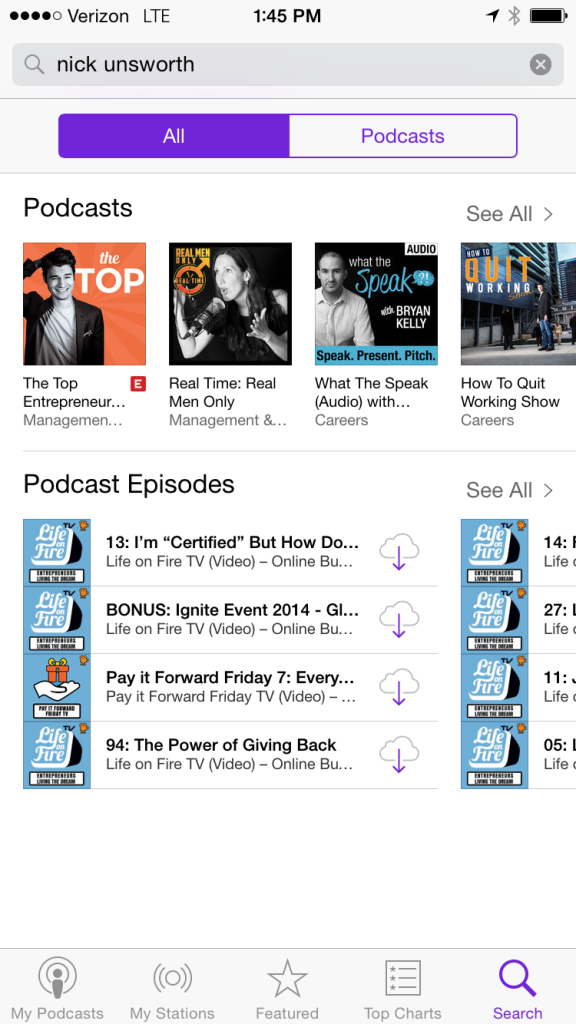
These are all little, unsexy things, that may drive 2-3 downloads per day but added up, over time, they move the needle.
Top tip: The trick to getting 7 reviews per week and a flood of new subscribers
Another advantage to a daily show is you can require guests to subscribe to the show, rate the show, and review the show.
Use this simple email script to make sure all of your guests are helping grow the show with you:

When people opt in to my list, I send an autoresponder sequence that many people call brilliant. It’s because I focus on people and conversation:
The SUBJECT LINE says: “hey” (I copied this from Barack Obamas #1 fundraising email)
The content says:

Now, take a look below and notice the click through rate on the first email is 0%. That’s because there are no links to click. I’ve optimized the email to get the new subscriber to reply directly to me!

If they reply to the auto-responder, I’ll reply manually to make sure they subscribe to the show by saying:
“If you’re loving the show will you follow these instructions and subscribe? Once your done, text me a screenshot of iTunes that shows you’ve subscribed and I’ll call you out on the next episode to get you some free exposure and show my appreciation! My number is 7034312709”
Once they subscribe, THEN use one of these 4 phrases to FORCE PEOPLE TO LEAVE A RATING AND REVIEW…

DO NOT ASK for both at once – it’s too much. Get them to say “yes I’ve subscribed” first AND THEN use the 4 phrases below to instantly get reviews:
-
If you’re loving the show will you leave a rating? Let me know what you write when you’re done, I’m curious.
-
Sometimes Apple is weird, shoot me a quick reply when you’ve left a review so I know it worked
-
I want to call you out on the next episode, leave a review? (See how I did this in the episode on this show.)
-
Screenshot your review and send it to me so I can give you a surprise that everyone else has to pay for (I then send them an eBook that I sell for $27 for free).
NOTE: If you just ask for a review, people will make you feel good and just say yes. You have to get them to emotionally commit. The 4 phrases above are working the best for me.
Step 4: Position for the long term game
This starts with recording a pre and post roll on every episode. Nobody does this and I don’t understand why.
The reality TV shows that are THE BIGGEST hits start each show with a 2-3 minute teaser of what happened last time, and usually end with a 2-3 minute teaser of whats coming up.
Survivor. Shark Tank. The Apprentice. HOUSE OF CARDS. They all do it and it works on me so I’m copying them.
At the start of each show I’ll say something like:
“In the last show you missed [guest name] talking about [headline that sparks curiosity/suspense]“
At the end of each show I’ll say something similar as well. This helps “connect” the episodes like a story that listeners can get totally addicted to and turns one download into 3, 4, and 5 downloads.
So, create amazing content and get people addicted.
Top tip: Be consistent
This is the #1 way to increase downloads is to publish more frequently. Many podcasts have sputtered out because the hosts quit too early. Commit to doing at least a years worth of shows or don’t do it at all. I’ve committed to one show per day released at 9am EST lasting between 15-20 minutes.
We always stick to this and our listeners love it.
We experimented with posting a REPLAY of a past episode with a different title to see if it would spike downloads.
Should you post the same content over and over to juice download numbers?
If the experiment worked, it would mean we could double frequency from 1 per day to 2 per day (unheard of in Podcasting but we’re trying all sorts of weird tactics!)

The idea came because I know when I listen to other shows, I never go all the way back to the beginning. A replay with a compelling title might pull me in and get me addicted.
We haven’t done a replay since the one we did on August 23rd because I’ve got several concerns despite the apparent success that day in terms of downloads.

We saw 1718 DOWNLOADS that day up from our 1100 average (about a 67% increase!)
My biggest concern is that our most loyal listeners (who HAVE listened to all shows) will get PISSED OFF that we’re reposting content. Then again, reality TV shows do this all the time (See Shark Tank).
My second concern is I don’t know if Apple penalizes you for posting the same content twice (kind of like how Google does if you post same blog post twice).
Will keep you updated on these experiments.
No matter what you do, tell your audience in episode 1 exactly what your show is, why you’re doing it, and when they can expect new shows – and STICK to it!
Top tip: Aggressively look for ways to stay close to your listeners
The best way to do this is to give out your phone number and text listeners. My favorite question to ask is: “What question do you always wish I would ask but I never do?”
Below, Ben Williamson from Episode 23 sent me a text as I was writing this congratulating me on the top spot in new and noteworthy. It’s always important to celebrate with your guests and listeners!

I also tell each new email subscriber from the show to UNSUBSCRIBE from my list unless they introduce themselves by taking this survey I set up using Ryan Levesque’s Ask book technique.

Ryan’s technique consists of a series of 8 questions. You then use responses to update subscriber merge tag fields in your CRM.
I then send out podcast episodes where guests match almost exactly where my new subscriber was 5 years ago.
The 8 questions:
-
What is your single biggest marketing challenge right now?
-
Which of the following best describes you? (choices like “sell own products” “sell other peoples products”)
-
Which of the following best describes you? (choices like “$500k-1m in revenue”)
-
Roughly, what’s the overall size of your business in terms of gross sales $?
-
What’s your primary niche/market?
-
Email, Name, Phone
I then put responses in an excel doc to categorize and then re-upload fields into Mailchimp so I have more accurate merge tags (THESE ARE FUTURE OF MARKETING!!)

This increases open rates and click through rates like you wouldn’t believe.
Top 10 Articles I Studied Pre-Podcast Launch
-
8 unique marketing strategies to grow a podcast to the top of iTunes
-
How to produce a podcast with Jay Baer
-
How to start your own podcast with Lifehacker’s Patrick Allan
-
3 unique ways to get started with business podcast with John Dumas on Social Media Examiner
-
How to start a podcast with Pat Flynn
-
21 tips for launching a podcast with Jim Harmer
-
The podcast workflow with John Dumas
-
How to get your podcast to #1 in iTunes with Chris Ducker
-
Ten step podcast launch plan with Show Notes Guy
-
Studied and watch patterns in iTunes podcast app for 2 weeks 
Wrapping it up
In conclusion, don’t podcast unless you have a really good reason to. For me, I was already having conversations like this in my daily life and thought it would make sense for me to record and share them.
I’m playing a long term game with the show – betting on the fact that podcasting will become the NEW RADIO and that, by getting in early, I’ll reap rewards long term.
Author bio: Nathan Latka is the CEO and Founder of Heyo. He’s worked with over 200,000 small businesses and entrepreneurs on launching social campaigns that capture emails and drive sales. You can find Nathan on Twitter.
The post How To Launch a Podcast and Capture #1 Ranking appeared first on Jeffbullas's Blog.





